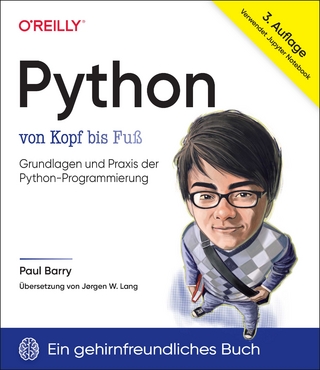
Numerical Python
Apress (Verlag)
979-8-8688-0412-0 (ISBN)
Numerical Python, Third Edition, presents many case study examples of applications in fundamental scientific computing disciplines, as well as in data science and statistics. This fully revised edition, updated for each library's latest version, demonstrates Python's power for rapid development and exploratory computing due to its simple and high-level syntax and many powerful libraries and tools for computation and data analysis.
After reading this book, readers will be familiar with many computing techniques, including array-based and symbolic computing, visualization and numerical file I/O, equation solving, optimization, interpolation and integration, and domain-specific computational problems, such as differential equation solving, data analysis, statistical modeling, and machine learning.
What You'll Learn
Work with vectors and matrices using NumPy
Review Symbolic computing with SymPy
Plot and visualize data with Matplotlib
Perform data analysis tasks with Pandas and SciPy
Understand statistical modeling and machine learning with statsmodels and scikit-learn
Optimize Python code using Numba and Cython
Who This Book Is For
Developers who want to understand how to use Python and its ecosystem of libraries for scientific computing and data analysis.
Robert Johansson is an experienced Python programmer and computational scientist with a Ph.D. in Theoretical Physics from Chalmers University of Technology, Sweden. He has worked with scientific computing in academia and industry for over 15 years and participated in open source and proprietary research and development projects. His open-source contributions include work on QuTiP, a popular Python framework for simulating the dynamics of quantum systems, and he has also contributed to several other popular Python libraries in the scientific computing landscape. Robert is passionate about scientific computing and software development, teaching and communicating best practices for combining these fields with optimal outcomes: novel, reproducible, extensible, and impactful computational results.
1. Introduction to Computing with Python.- 2. Vectors, Matrices and Multidimensional Arrays.- 3. Symbolic Computing.- 4. Plotting and Visualization.- 5. Equation Solving.- 6. Optimization.- 7. Interpolation.- 8. Integration.- 9. Ordinary Differential Equations.- 10. Sparse Matrices and Graphs.- 11. Partial Differential Equations.- 12. Data Processing and Analysis.- 13. Statistics.- 14. Statistical Modeling.- 15. Machine Learning.- 16. Bayesian Statistics.- 17. Signal and Image Processing.- 18. Data Input and Output.- 19. Code Optimization.- Appendix.
| Erscheinungsdatum | 02.10.2024 |
|---|---|
| Zusatzinfo | 155 Illustrations, color; 10 Illustrations, black and white; XX, 492 p. 165 illus., 155 illus. in color. |
| Verlagsort | Berlin |
| Sprache | englisch |
| Maße | 178 x 254 mm |
| Themenwelt | Mathematik / Informatik ► Informatik ► Datenbanken |
| Informatik ► Programmiersprachen / -werkzeuge ► Python | |
| Mathematik / Informatik ► Mathematik ► Computerprogramme / Computeralgebra | |
| Schlagworte | algorithms • Computation • FEniCS • Image Processing • IPython • Jupyter • machine learning • matplotlib • Numerical • NumPy • Python • SciPy • Signal Processing • tensorflow |
| ISBN-13 | 979-8-8688-0412-0 / 9798868804120 |
| Zustand | Neuware |
| Informationen gemäß Produktsicherheitsverordnung (GPSR) | |
| Haben Sie eine Frage zum Produkt? |
aus dem Bereich


